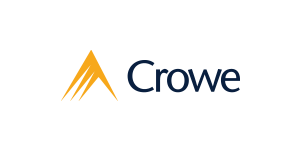How to Handle ESG Reporting and Disclosure: A Guide for Executive Leaders and Boards
By Gregg E. Anderson

October 8, 2019 All Industries
Today’s stakeholders increasingly expect organizations to disclose their performance in a variety of areas that go beyond traditional financial metrics and demonstrate their long-term sustainability efforts. As investors look to integrate environmental, social and governance (ESG) factors into the investment process, boards, audit committees and executives must stay abreast of evolving sustainability measurement and reporting practices.
In this context, the term “sustainability” refers to addressing high-profile issues such as climate change and carbon emissions and also a broader range of ESG concerns such as employee working conditions, data privacy, responsible supplier management and support of diversity and inclusion — all which contribute to the long-term sustainability of an enterprise.
Often, however, a significant gap exists between perception and reality when it comes to sustainability performance. According to a Conference Board report, “Companies’ ability to deliver on sustainability is outstripping their ability to communicate their sustainability achievements effectively.”
Over the years, corporations have become accustomed to complying with exacting financial information reporting requirements, but reporting about performance in nonfinancial areas has not always been subject to comparable rigor. That situation is changing, however, as investors and other stakeholders demand greater disclosure about specific actions companies are taking to maintain the long-term sustainability of their operations.
Standard definition and collaboration
One of the drivers for disclosure standards has been the emergence of the Sustainability Accounting Standards Board (SASB), an independent, not-for-profit standard-setting body accredited by the American National Standards Institute. SASB’s goal is to encourage disclosure by extending accounting infrastructure to ESG factors, using reporting standards that will serve as a complement to other financial reporting frameworks such as Financial Accounting Standards Board and International Financial Reporting Standards frameworks.
In November 2018, the SASB published the world’s first set of industry-specific sustainability accounting standards covering financially material issues.
Another noteworthy trend is the growing acceptance of integrated reporting of both material financial and nonfinancial information in the same document. The International Integrated Reporting Council (IIRC) is a group of organizations, regulators, investors and others that encourage integrated reporting in the public and private sectors. The IIRC defines an integrated report as “a concise communication about how an organization’s strategy, governance, performance and prospects, in the context of its external environment, lead to the creation of value in the short, medium and long term.”
In 2019, the Corporate Reporting Dialogue, a group of leading financial and nonfinancial corporate reporting framework providers convened by the IIRC, developed a position paper, “Understanding the Value of Transparency and Accountability.” The publication focuses on the seven fundamental principles report preparers should follow: materiality, completeness, accuracy, balance, clarity, comparability and reliability. Companies are encouraged to adopt components of the frameworks that are applicable and meaningful.
Resource requirements
Along with addressing the need to have consistency between frameworks, efforts are also underway to reduce the effort to prepare and disclose ESG information. Recent examples include:
“TCFD Implementation Guide”
The Climate Disclosure Standards Board and the SASB worked together to share tools that are cost-effective for companies and decision useful for investors through disclosures that are aligned between the Task Force for Climate-Related Financial Disclosures (TCFD) and SASB disclosures.
“Enterprise Risk Management: Applying Enterprise Risk Management to Environmental, Social and Governance-Related Risks”
The Committee of Sponsoring Organizations of the Treadway Commission and the World Business Council for Sustainable Development developed this guidance to use a company’s enterprise risk management governance and processes to identify, assess and mitigate ESG-related risks.
“Constructing ExxonMobil’s First Integrated Report: An Experiment”
In 2018, two integrated reporting champions, Robert Eccles and Michael Krzus, conducted an experiment to answer this question: “Is it possible and, if so, how difficult would it be to construct an integrated report for a company based on information from documents the company has placed in the public domain?” For their experiment, they chose ExxonMobil and were able to construct an integrated report for the year 2016 in about 40 hours.
Verification processes
As new disclosure standards have emerged, assurance practices are attempting to keep pace. In 2012, the American Institute of CPA’s Assurance Services Executive Committee convened the Sustainability Assurance and Advisory Task Force. In 2017, the task force published “Attestation Engagements on Sustainability Information.” The guide assists practitioners engaged to perform an examination or review engagement of an entity’s sustainability information and includes performance and reporting guidance on applying the clarified attestation standards to the subject matter of sustainability information.
Materiality: Tracking and reporting what matters most
One useful technique board members can employ to bring clarity to their organizations’ sustainability reports is to remember the important principle of materiality. In other words, board members should make sure the sustainability goals and objectives that are being reported relate to the company’s strategy and operations in a material way.
The Governance & Accountability Institute (G&A), a global research organization specializing in ESG factors, has conducted extensive research into the question of materiality, culminating in a report, “Sector Study on Sustainability Materiality of the SDG Targets and GRI Indicators: What Matters to Your Sector?” This research project encompasses 1,387 organizations that used the GRI’s G4 framework to guide their sustainability and ESG reporting.
As board members evaluate their sustainability reporting initiatives, comparing their own companies’ reporting practices to the industry-specific sector benchmarks in the G&A report can be helpful.
The director’s perspective: Providing oversight
Directors have an opportunity to perform oversight by viewing strategy, culture, performance and risk through the lens of ESG factors. In this role, the following questions can guide discussions with management:
- Are our ESG goals relevant to our stakeholders, including not only investors but also customers, suppliers, employees and the communities in which we operate? How does the organization define the goals, and what is the level of materiality to our stakeholders?
- Are our strategy and business plan in harmony with our purpose? How does the activity reported relate to our business? If sustainability initiatives do not connect with strategy, is our company’s commitment open to question?
- How do our strategy, business plan and ESG reporting contribute to our reputation? Does the organization perform as designed?
- Does the culture of the organization support the pursuit of our long-term sustainability goals? Do employees feel empowered to pursue our sustainability goals and make decisions based on them?
In many ways, the fourth question is the most challenging. By documenting and publicly demonstrating their commitment to managing their operations in a sustainable way — and by empowering employees to perform their jobs in ways that support these specific goals — companies can add long-term value to the enterprise by strengthening relationships with investors, customers, employees and communities.

